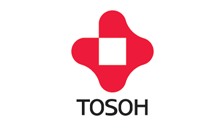Introduction
Glycosylation is one of the most common forms of post-translational modification of proteins. The polysaccharide side chains (Glycans) play critical roles in physiological and pathological reactions ranging from immunity to cell signaling. Besides the interest in characterizing glycosylation pattern of proteins for structure/function analysis, the thorough characterization of glycosylation is also a major quality parameter in the production of biotherapeutics. Hydrophilic interaction liquid chromatography (HILIC) is a well-recognized technique that effectively separates and quantifies isolated glycans.

Glycoprotein analysis involves characterizing complex N- and O-linked structures composed of sugar moieties. Besides mass spectrometric techniques, HILIC using amide-based stationary phases is a well-established, robust technique used by many laboratories to obtain high-resolution separation of N-linked glycans released from glycoproteins. Tagging the glycans with a fluorescent label such as 2-aminobenzamide (2AB) or aminopyridin (PA) allows the sugars to be detected at femtomole levels. TSKgel Amide-80 column chemistry is ideally suited for the separation of charged and neutral fractions of glycan pools in one run. The retention of labelled polysaccharides by TSKgel Amide-80 enables the identification of glycan structures by comparison to a labelled dextran ladder that is used to normalize retention times in order to calculate the number of glucose units (GU values) of the separated glycans. The GU values obtained after separation of sequential exoglycosidase digests can be used to predict the glycan structure by database query (Glycobase, autoGU).





